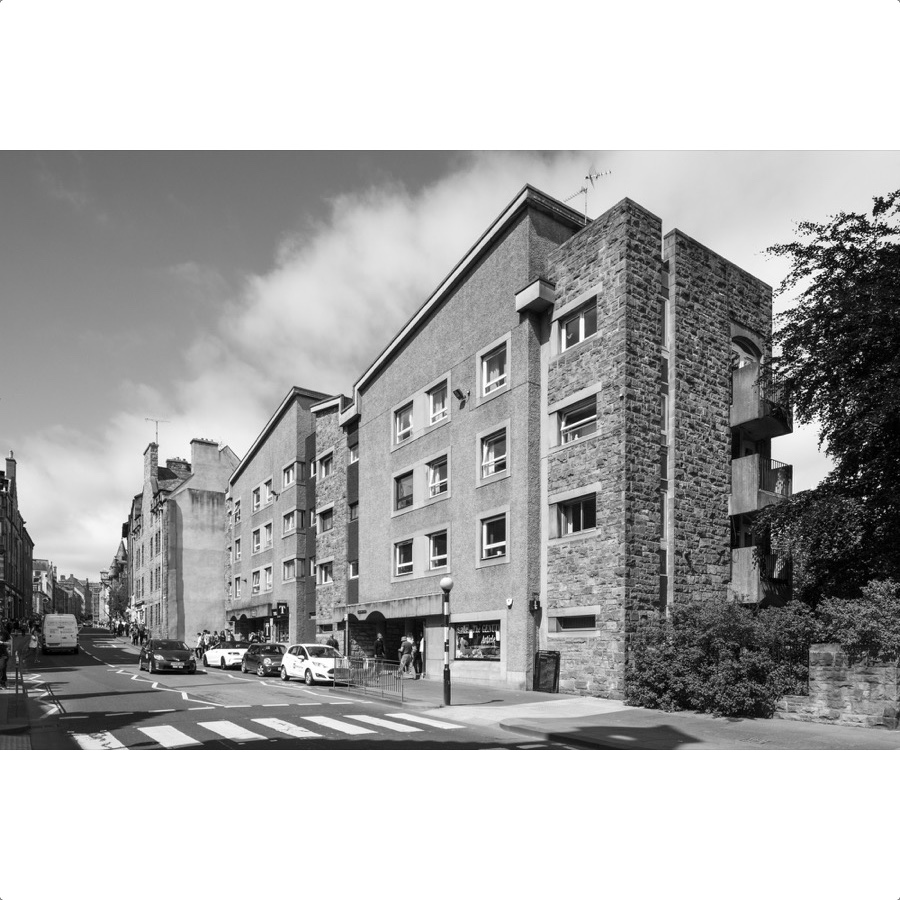
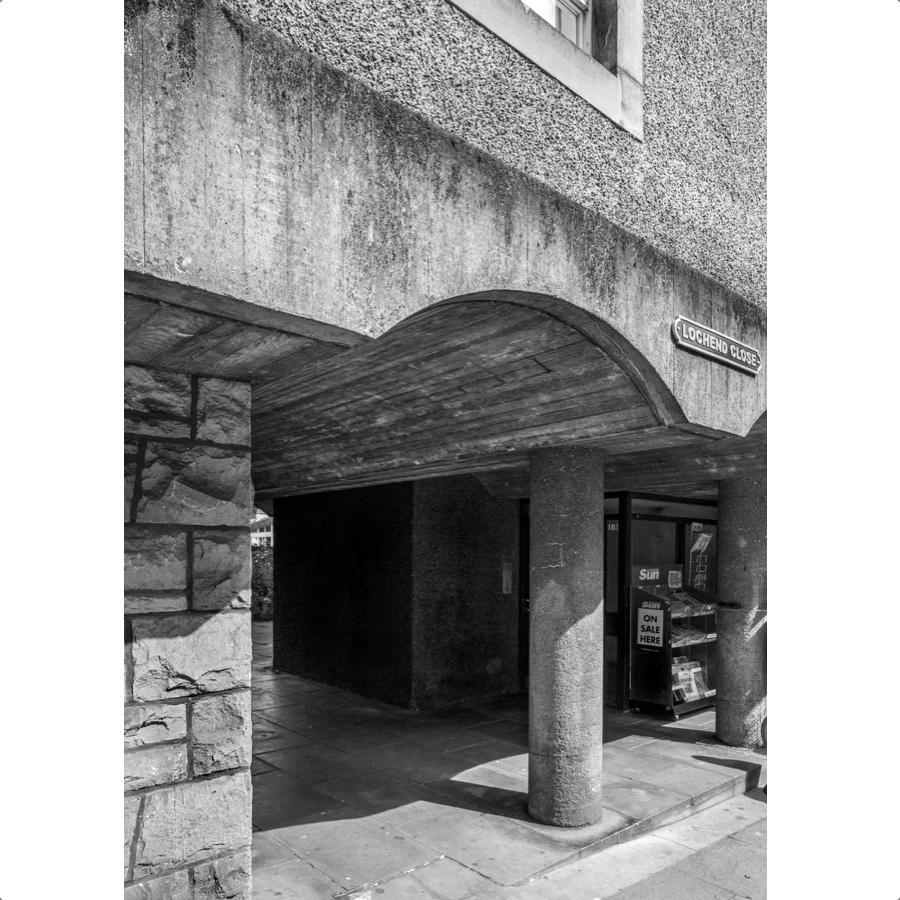
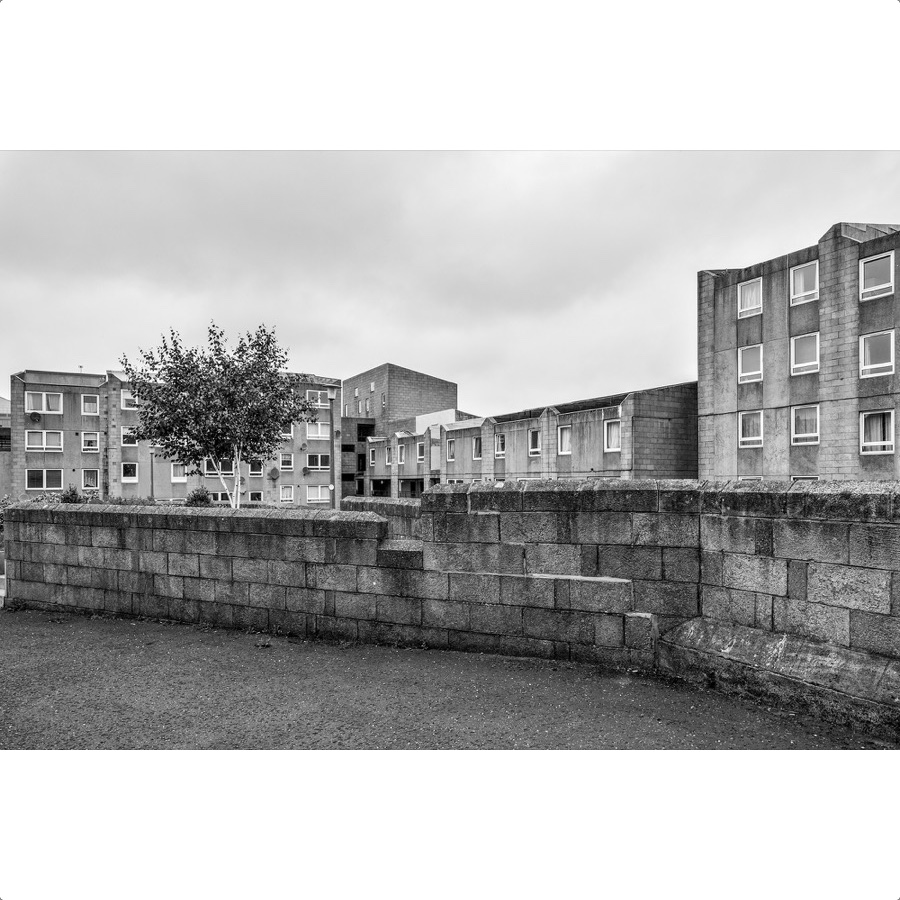
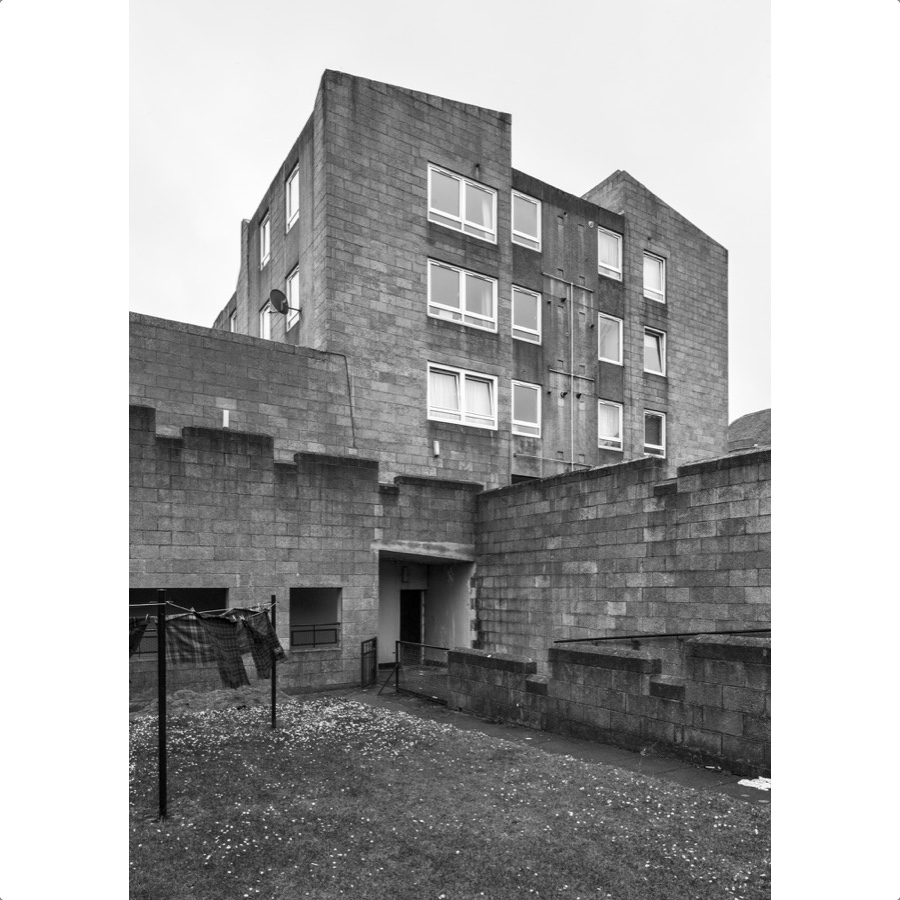
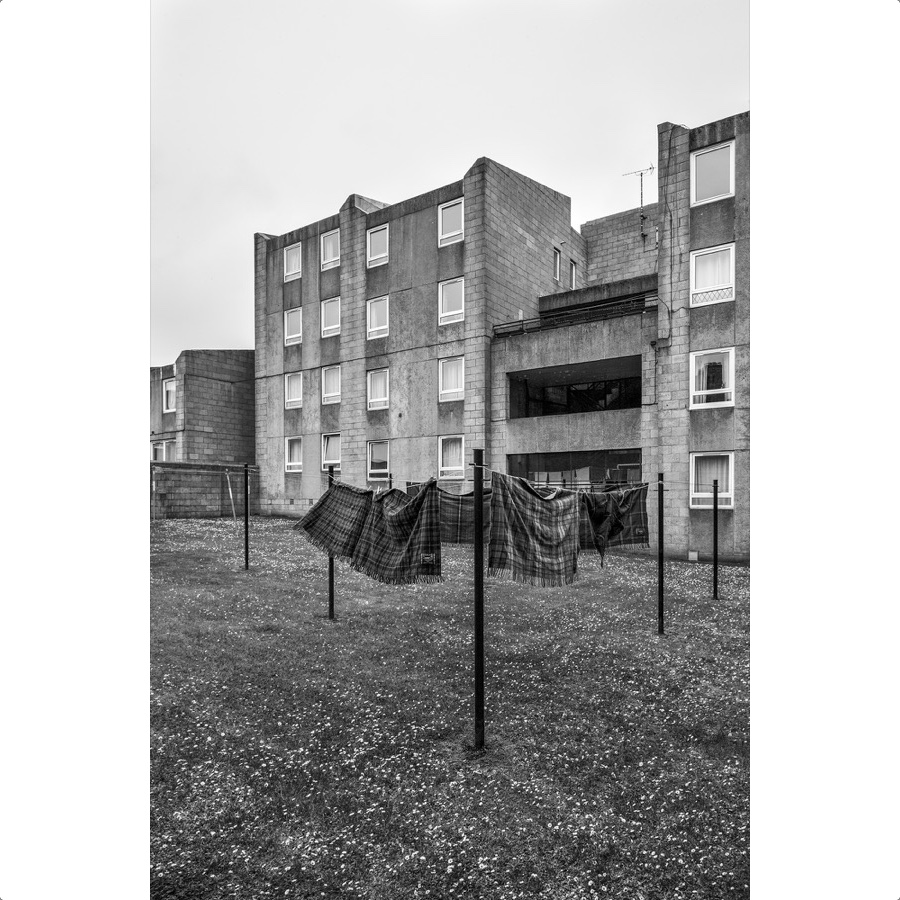
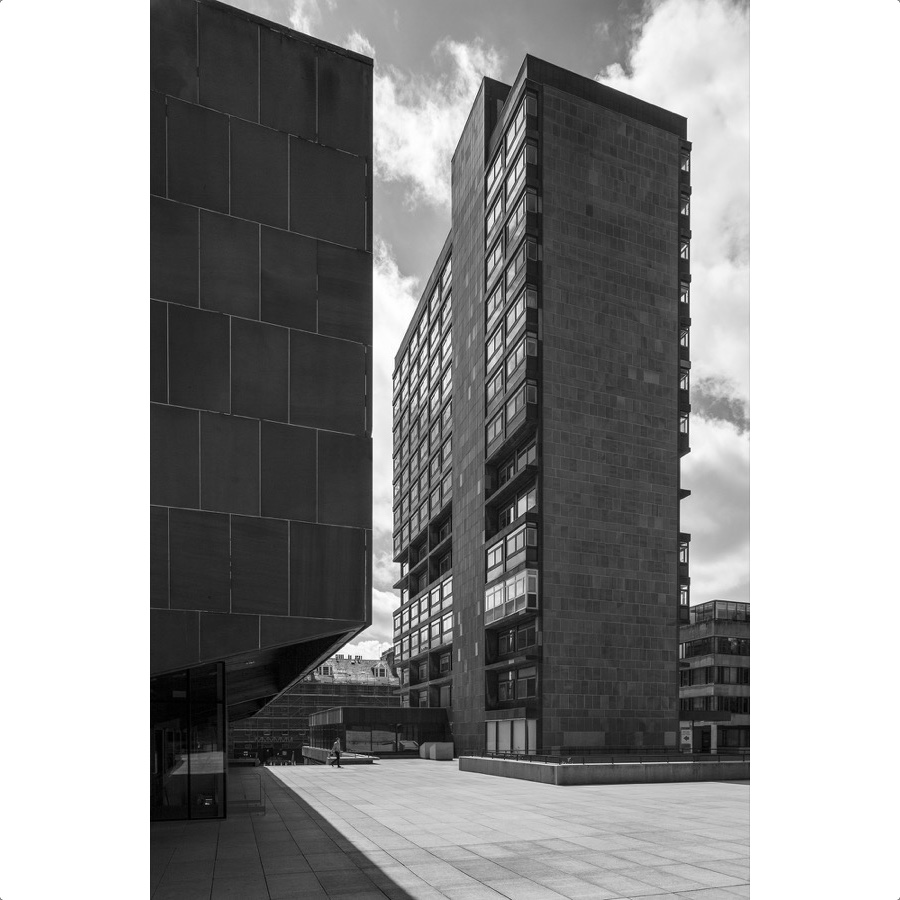
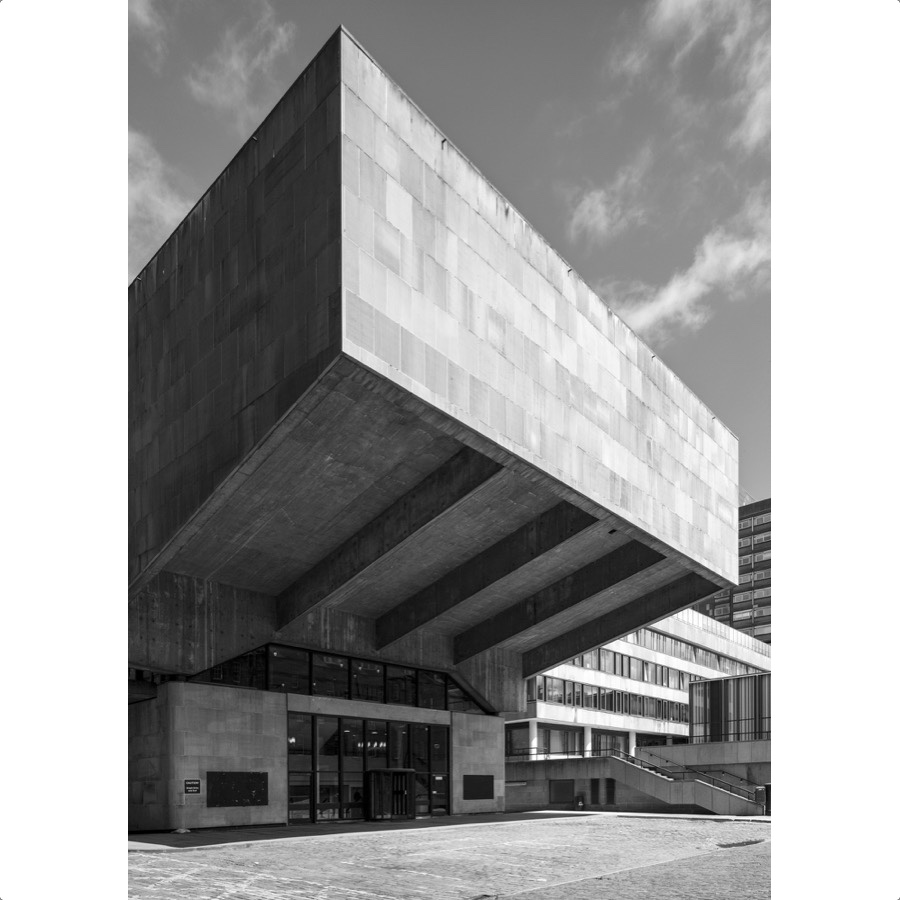
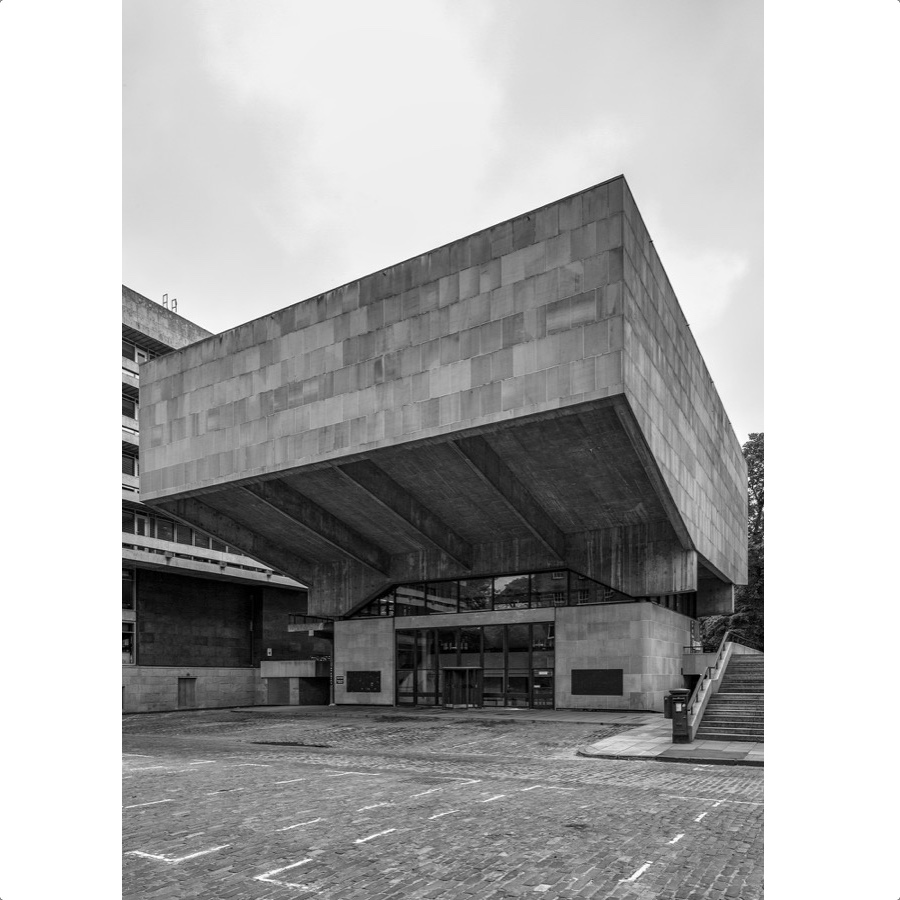
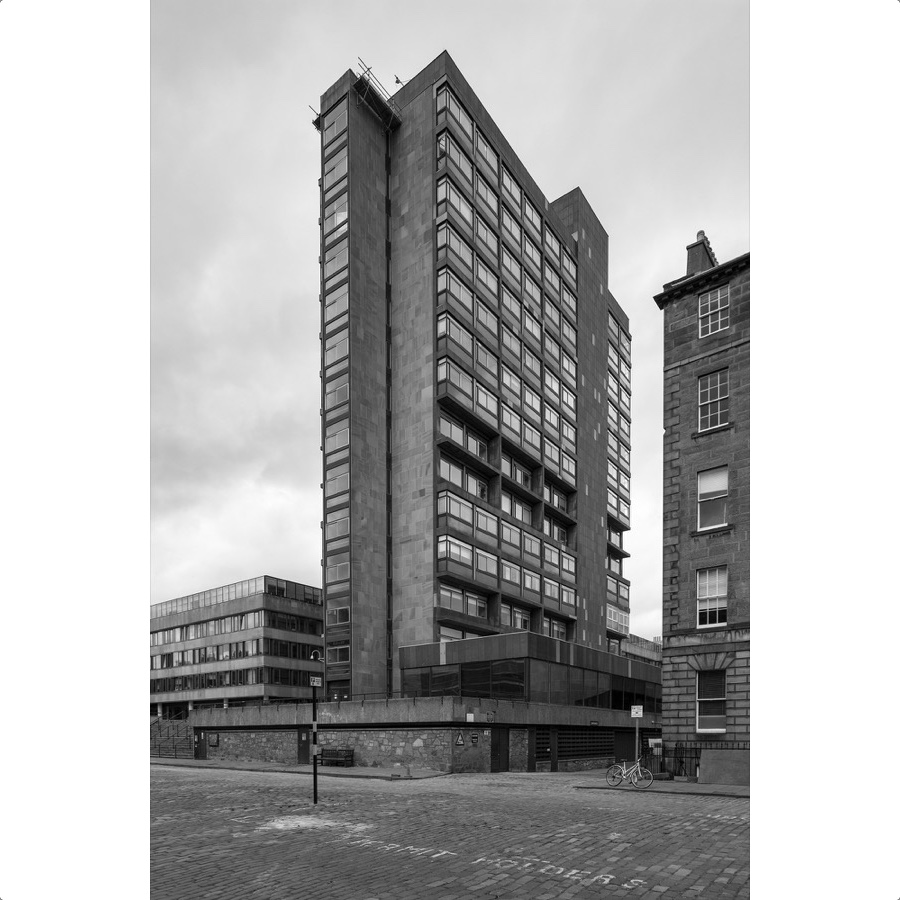
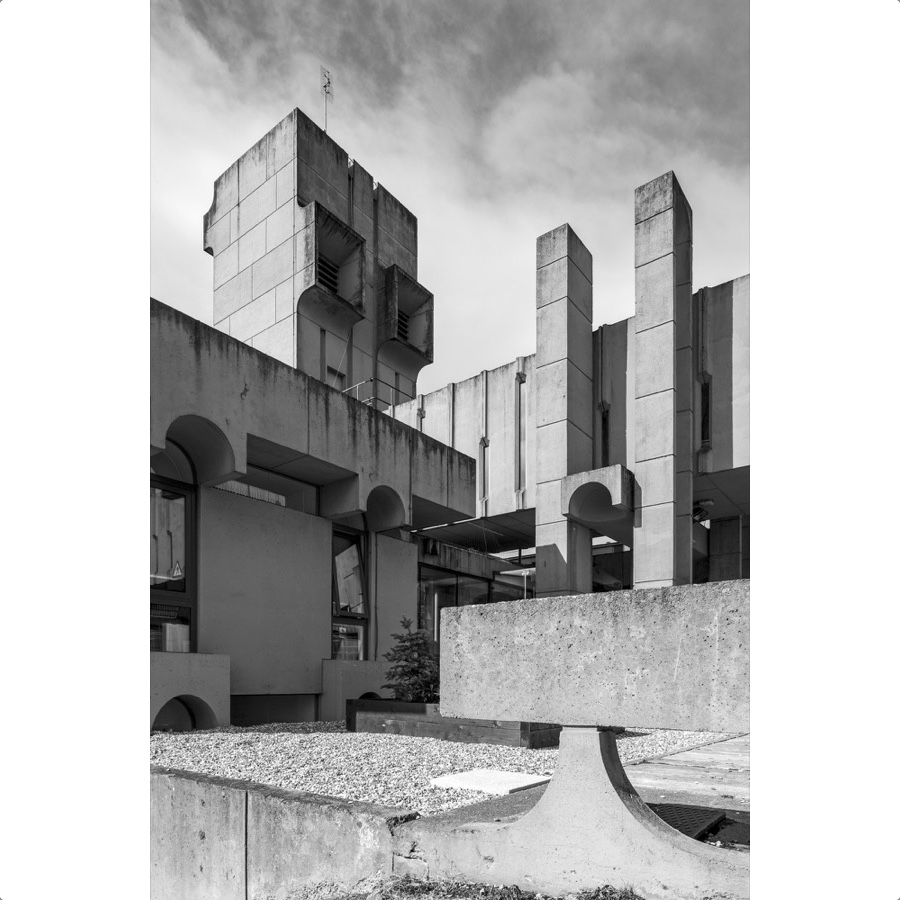
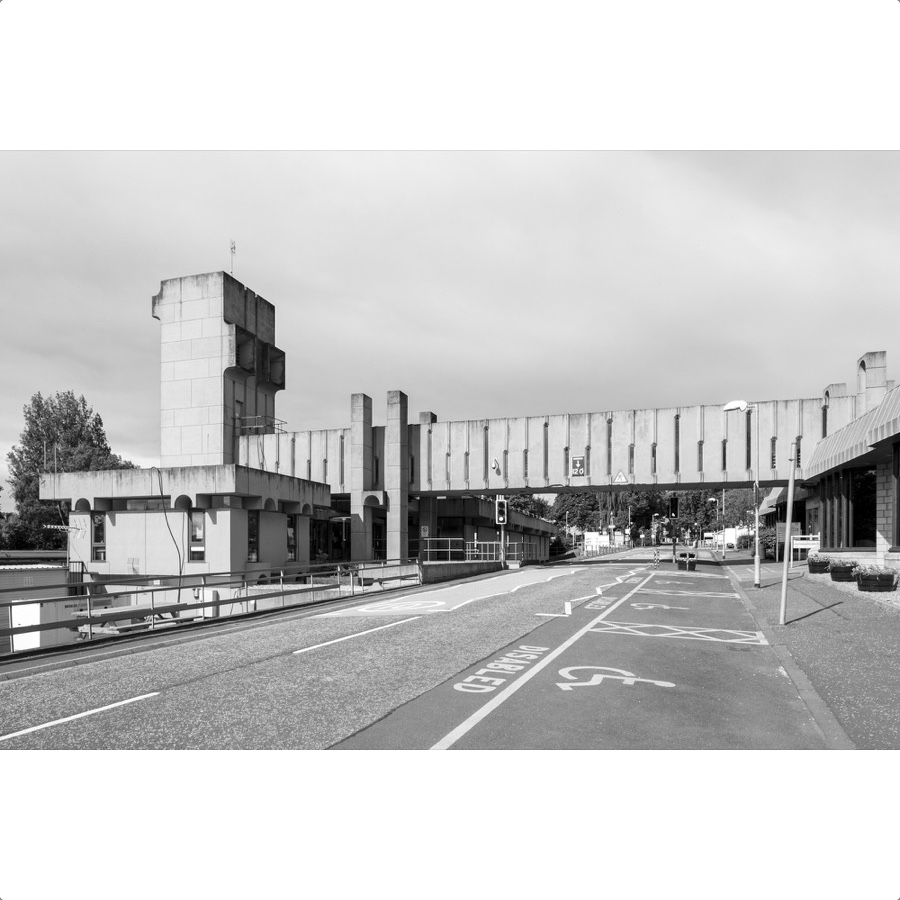
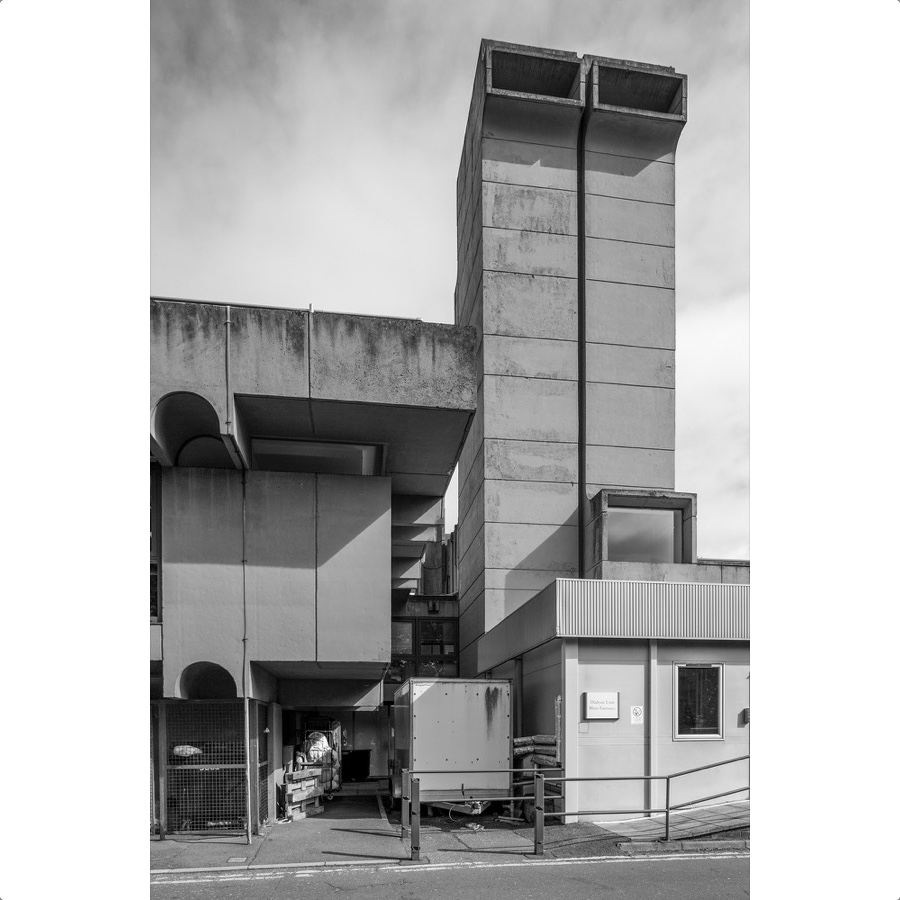
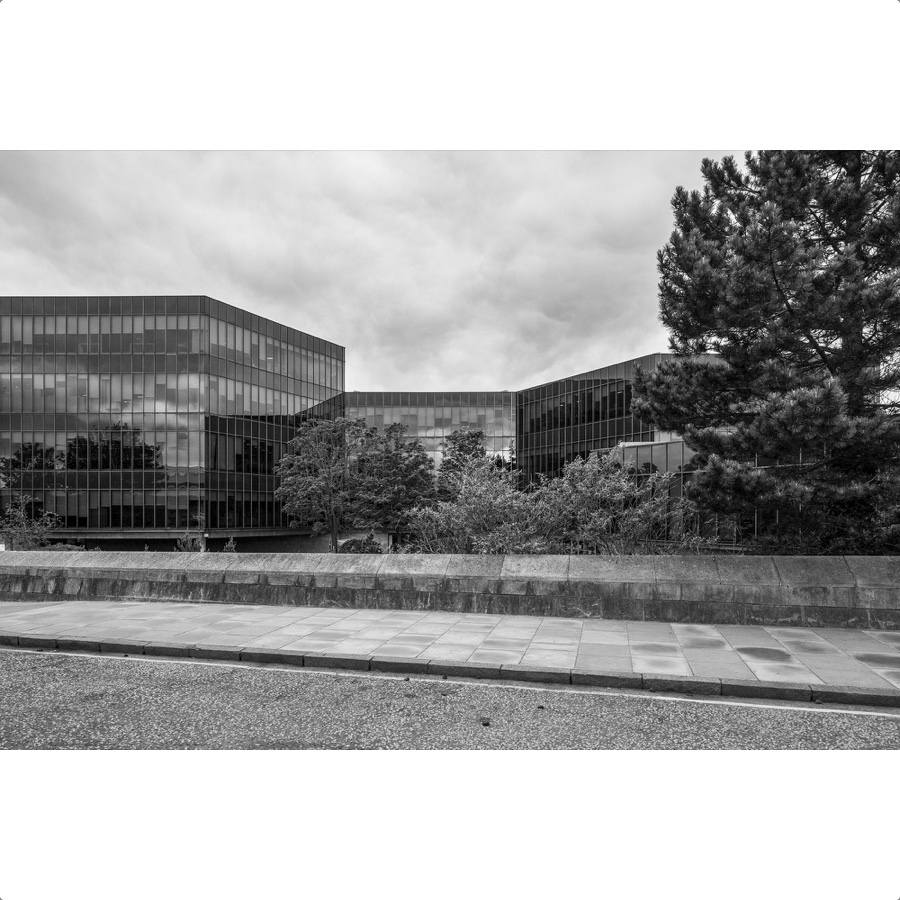
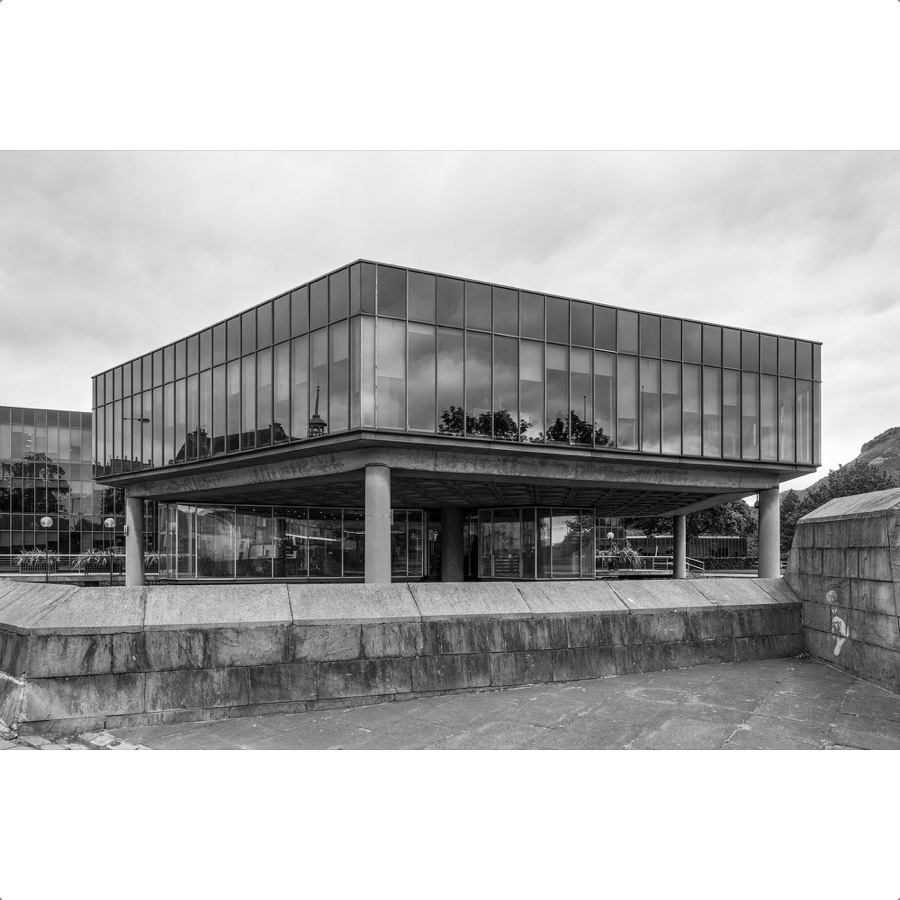
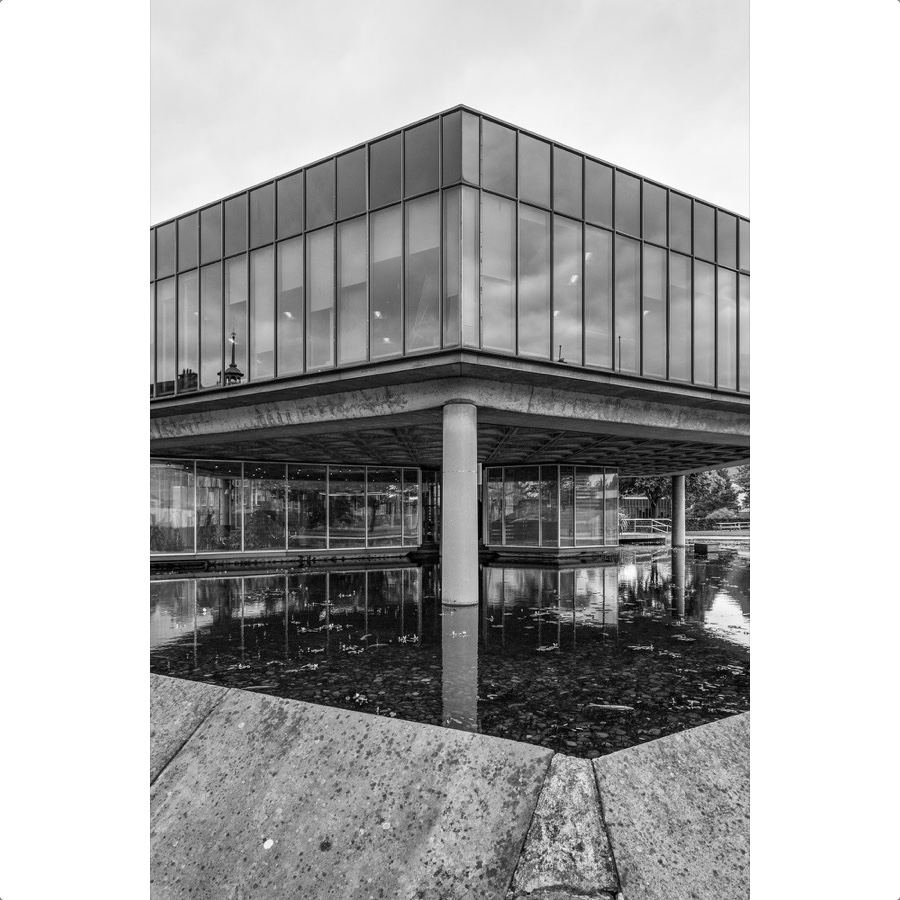















The extension of typographical forms across the page allows both writer and reader to explore a more meaningful expression of words used as their spatial and relational presence is reinvented or reinforced. This spatial awareness, clearly visible when drawn across paper, can be less obvious on the architectural ground. It is sometimes hard to appreciate the multiple nuanced lines of a particular building without taking time to walk around it and see through the first impression of an unflattering weather-worn facing or the well intentioned but inappropriate application of paint.
Source: 'Post-war Public Art and the Preservation of Human Spirit', Umney, D. (2018) in Concrete Poetry, Phipps, S. London: September Publishing.
The powerful impact of Phipps's photography renders this architecture as sculpture, but it is a mistake to overemphasise this interpretation; the houses and other buildings he photographs are not art. What has greater power is the way in which these images remind us of the social project of the post-war period that - while not always successful because of poor design, construction, maintenance or deliberate neglect - created modern and decent places for people from all backgrounds and means to live comfortably and with dignity...We are back in the midst of a crisis akin to the problems Britain faced in the middle of the 20th century but borne of very different circumstances. What does Simon Phipps's work tell us about this situation? And how might the past he documents offer a starting point for a different way forward? We might go back to Reyner Banham's original question: The New Brutalism: ethic or aesthetic? The answer is, of course, one of ethics, and the challenge we face for the future is how to drag a (rough) poetry out of the confused and powerful forces which are at work.
Source: 'Concrete Poetry: Art, Architecture and Society in the Work of Simon Phipps', Ince, C (2017) in Finding Brutalism, Phipps, S. (2017) Zurich: Park Books.